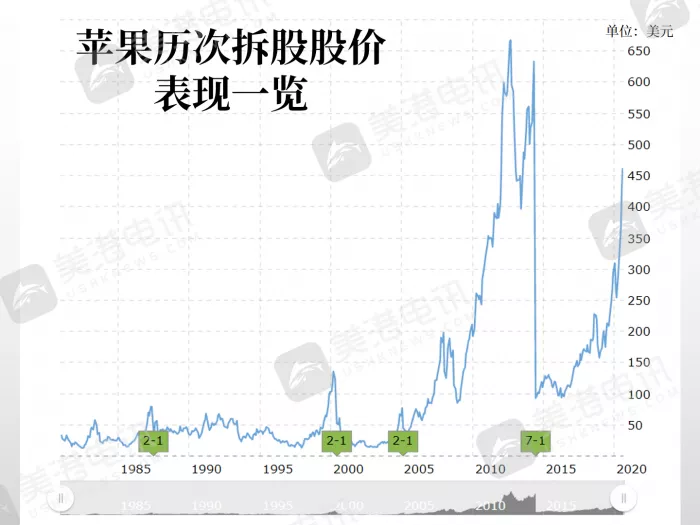Recently, American technology giants have set off a "stock split upsurge". Yesterday, Tesla officials announced the split of shares. It is planned that the shareholders' meeting in early August will discuss and approve the proposal to split three shares from one share, which is the first time in two years. On Tuesday, Amazon's first stock split plan since 1999 officially took effect, and its share price once again reached the triple digits.

According to media reports, in addition to Amazon and Tesla, the parent company of Google, alphabet, cross-border e-commerce Shopify, Nintendo and Gamestop may split their shares this year.
Stock splits are not uncommon. Over the years, many listed companies have split their shares. Berkshire Hathaway, managed by Buffett, split class B shares by 50 in 2010, Apple Since the initial public offering in 1980, there have been five stock splits. Although these companies have different split ratios, there must be some reasons for so many multibillion dollar companies to split their shares.
How to disassemble?
Let's first learn how to split the shares. Take Amazon as an example. When the shareholders who held Amazon shares on May 27 split the shares on June 3, they will get 19 additional shares for each share they hold. This will not make existing shareholders pay any price, and the value of their shares will not change due to the split.
Therefore, if Amazon's share price before the split is $2500, shareholders holding three shares will own 60 shares after the split date, but their total investment will still be around $7500 (assuming that the share price will not plummet or soar).
The only difference is that the price of Amazon's stock will fall sharply. In this example, the share price will be reduced from $2500 to $125 per share. For many investors, the numbers displayed on your stock trading app are slightly different.
Why
The stock split seems meaningless. Although different figures are displayed, the company still operates as before. The market value has not changed, and the value of shares held by shareholders has remained unchanged. Why do you do this?
There are many reasons, most of which are attributed to investor psychology. As share prices rose, buying stocks began to look unbearable. A $1 share price means you can buy thousands of shares at $2500, while a $2500 share price means you can only buy one.
This problem is beyond the scope of moderate investors' perception of the portfolio. For those who have an investment principal of $10000, buying an Amazon stock at the previous price means investing 25% of the portfolio in a company, which is highly concentrated and cannot achieve diversified investment.
Secondly, share splitting helps to improve the liquidity of stocks, making it easier to buy or sell. Amazon said in the document that the move would make it easier for its employees to manage their Amazon shares. Previously, if they wanted to get $1000 in cash, they needed to sell all their shares and reinvest the rest. After the stock split, they can sell fewer shares and get the required $1000.
More importantly, stock splits are often accompanied by a rise in share prices. More investors will be more likely to buy stocks, which may increase demand and thus raise prices.
In essence, the stock split will not really change anything, and the fundamentals of the company will remain unchanged. Nevertheless, since 1980, companies that split their shares have outperformed the S & P 500 by 16.3% in the 12 months after the spin off took effect.
This is a good example of correlation, but it does not mean that there is a causal relationship. In fact, stock splits are almost certainly not able to make their performance exceed the market average. A prerequisite for the sharp rise in the share prices of companies that split shares is that their businesses have been performing well and may have surpassed the S & P 500 before the split.
Why now
Why is there a "stock split upsurge" now? Take Amazon as an example. Amazon's stock split now has an additional benefit. So far, American technology stocks have suffered heavy losses in 2022, and Amazon's share price has fallen nearly 30% so far this year. The share prices of apple, Netflix, meta and Microsoft all suffered a similar blow.
It is obvious that this year will be a difficult year for a company that has been hovering around the $3250 mark for most of 2021 during the downturn of its stock price. Stock splitting can change this view.
For example, after the split, the stock price was $125, and this background and price correlation disappeared. Again, this is about psychological perception.
What does it mean for investors?
What does stock split mean to ordinary investors? The most direct point is that you can afford it, and you no longer have to buy shares with others.
But it also means that it is unlikely to have the same shareholder rights, such as the right to vote on corporate decisions. For most investors, this may not be a big deal, but it may be important if you want to have a say in new initiatives such as sustainable business practices.